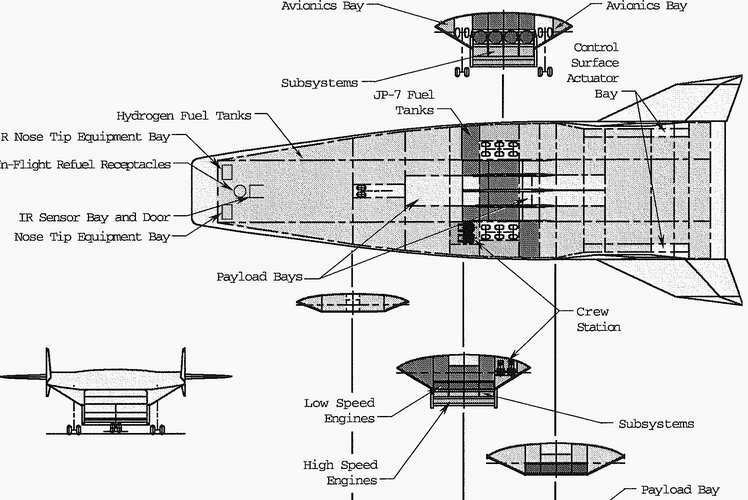So if you want to have some fun, go back to the beginning of this thread and start skimming it from there. Make sure to read the dates.
This thread started in 2009. The Blackstar article appeared in 2006. That was 18 years ago, the thread started 15 years ago. Where's the evidence in those 18 years? Nothing. Now think about what that means, and think about how you can apply that example to other claims and stories. It helps to develop skeptical reading and evaluation skills.
There were a lot of things that bugged me about the original Blackstar article, but one of them was that I thought that the author should have called up an aerospace engineering professor at a big school like Purdue or MIT and asked him to do some of the basic math. Assume a plane the size of a B-70. How big an aircraft could it carry on its back (or underneath)? And how much fuel could that spaceplane carry? What would be the maximum performance it could achieve to orbit? I'm sure that a smart aerospace engineer could figure out the ballpark performance, and I'm sure that it would have been unimpressive.
But we have so much evidence that blackstar exists how could we possibly doubt it?
Randy


